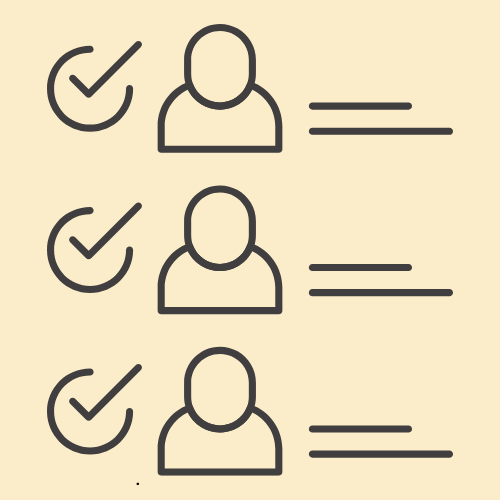Improving Workforce Productivity with Effective Attendance Management

Workplace productivity isn’t just about employees showing up. It’s about being there and doing stuff in an efficient and engaging way. But can people really work that focused for an entire shift?
According to research, work is divided so we have performative (being there physically but not in spirit) and productive (giving all you have) work. Indians are at the first place with the most performative work (43%), while Japan and Singapore are closely behind. Surprisingly, German workers are absent only 29% of the time, while South Korea and the US have the lowest percentage of time workers pretending to be busy–28%.
Ever wondered how can workforce productivity go higher?
One way is by using smart attendance management tools designed to streamline the process and make sure that the time employees spend at work is productive.
Chapters
- Verbeter de productiviteit van uw personeel met effectief aanwezigheidsbeheer
- Waarom aanwezigheidsbeheer belangrijk is
- Hoe technologie het aanwezigheidsbeheer revolutioneert
- Strategieën om de productiviteit van het personeel te maximaliseren door middel van aanwezigheidsbeheer
- Het verband tussen aanwezigheid en betrokkenheid van werknemers
Why attendance management matters

Attendance management might seem like a simple administrative task–after all, it’s just keeping track of who’s there, right? But in reality, the best time and attendance software plays a far bigger role in ensuring the overall productivity and success in organization. Effective attendance management is capable of going beyond tracking absences. It creates transparency, improves accountability, helps identify patterns, and can even enhance employee morale.
Once when you or your business invest in a solid attendance management system, you’re effectively laying the groundwork for a more organized and happier workforce.
Why is it so important?
First of all, this kind of software minimizes absenteeism and tardiness. Absenteeism and habitual tardiness can have a serious impact on productivity. When employees feel their attendance isn’t monitored or that there aren’t consequences for being late, the chances of such behaviors becoming the norm increase. No Big Brother watching? Let’s have a party. But with the attendance management system, you can address these issues in real-time, before they become disruptive.
A good attendance system doesn’t just monitor employees–it empowers them. When people know they’re accountable for their time and performance, they’re more likely to show up on time and put in quality work.
Tracking attendance can help you make better decisions about staffing, scheduling, and resource allocation. Are too many people taking leave in the same week? Is there a spike in absenteeism during certain seasons (like flu season)? There are patterns that can influence how you manage the workload, so you can be sure the productivity doesn’t suffer when your employees aren’t here.
Believe it or not, a fair and transparent attendance policy can boost morale. Employees appreciate knowing the rules are applied equally to everyone. And it’s always great to know that those who are diligent about their time are recognized for it.
Errors in payroll can be a huge drain on both time and employee satisfaction. With an automated attendance system, payroll is both accurate and easier to process, especially if you’re paying workers by hour. No one wants to spend hours calculating overtime or fixing errors caused by manual entries.
How technology is revolutionizing attendance management

Days of manually checking in are long forgotten. Technology has drastically changed the way we manage attendance. No more relying on outdated systems or manual entries when you can have access to the state of the art modernized solutions?
Here are a few ways on how technology is improving attendance management:
Biometric systems
Biometric systems in attendance are like fingerprint or facial recognition. They are very popular because they eliminate ‘buddy punching’. Now nobody can clock in for somebody else.
With a biometric system, employees are physically present and accountable for their attendance. These systems have high accuracy, so there are no chances of frauds where people are in the system but physically elsewhere.
Mobile and cloud-based solutions
If your company has remote workers or they travel, mobile attendance tracking apps are game-changers. Employees can clock in and out by using their smartphones, and GPS features can confirm their location.
These cloud-based solutions offer real-time data, so it’s easier to oversee attendance from anywhere.
Not only does this increase flexibility, but it also creates a more inclusive system where both in-office and out-office remote employees are held to the same standards.
Time tracking and payroll systems
Mixing attendance management with payroll systems can reduce errors and save hours of work each week. Just imagine having automated systems that can calculate hours worked, overtime, and even time-off balances.
This can only make sure that employees are paid correctly and on time. It also helps when you need to comply with labor laws and overtime regulations but you’re prone to headaches when you try to manually track all that.
Analytics and reporting tools
If the tool can’t do analytics, does it even work? Ok, no more zen tech. But the truth is one of the most powerful features of modern attendance management systems is the ability to do analytics and create detailed reports.
Once when you read those reports and analyzes, you can see the trends your employees like, such as recurring absences or tardiness. Naturally, you’ll also need a reason behind them, and the tool can do that as well.
With this data in hand, you can decide how to improve attendance. Maybe you can adjust work schedules or offer wellness programs to deal with burnout.
Strategies to maximize workforce productivity through attendance management
Technology alone can’t solve all attendance issues. Effective attendance management also requires clear policies, strong leadership, and consistent communication.
What effective strategies can you try out?
Set clear attendance policies
Employees should know exactly what you expect of them when it comes to attendance and punctuality, and they should also understand the consequences of not coming on time or not coming at all.
Policies should cover everything from how to ask time off, what counts as being late, and the procedure for reporting absences. The key is to be transparent and fair.
Offer flexible work options
Let’s say you have a number of employees who don’t do mornings and are extremely productive during evening hours. Would be a shame to make them come early to work and watch them pretending to be busy while they’re drinking their third coffee, trying to awaken their spirit and will to live. If you have an option to offer flexible working hours, especially to your remote team members, it would probably be a good idea to do so.
Flexibility shows employees that the company values their work-life balance, which in turn can reduce stress and absenteeism of body and/or spirit. If people can adjust their schedules to better fit their lives, they’re less likely to call in sick or arrive late.
This is especially true for parents, caregivers, or those with long commutes. Instead of punishing them for needing time off, show them there’s a way to still manage work and be productive.
Recognize and reward good attendance
Recognition goes a long way in motivating employees to maintain good attendance. It’s important to remember that people don’t just want to avoid punishment–they want an acknowledgment for their efforts.
Basically, it’s like that little life trick of focusing on positive matters: when you’re late, try not apologizing for it but rather saying ‘Thank you for waiting for me.’ See, it sounds more positive already. You can do the same. Don’t just tell your employees they can’t be late. Tell them they need to be on time to get rewarded. And just like that, no more negative connotation.
As for rewards, it doesn’t have to be anything big. Try something simple like extra time off, gift cards, or public recognition. This can go a long way in making employees feel appreciated.
Encourage work-life balance
When your employee has a burnout, guess what happens? The productivity goes down, and more likely you’ll see him not coming.
When employees feel overwhelmed or stressed, they’re more likely to take unscheduled days off. But if you encourage a healthy work-life balance, that can improve overall productivity and reduce absenteeism.
How to bring more life to work? You can promote regular breaks, encourage the use of vacation days, and offer wellness programs.
The connection between attendance and employee engagement
Attendance and engagement are closely linked. Employees who are engaged are more likely to have good attendance, and vice versa. Help people love their job. When they feel valued and motivated, they naturally want to show up and contribute. On the flip side, if people feel disconnected or undervalued, absenteeism is often the result.
It’s not just about tracking who’s clocking in and out–it’s about creating an environment where people want to be present, both physically and mentally.
Author Bio
 Petra Rapaić is a B2B SaaS Content Writer. Her work appeared in the likes of Cm-alliance.com, Fundz.net, and Gfxmaker.com. On her free days she likes to write and read fantasy books.
Petra Rapaić is a B2B SaaS Content Writer. Her work appeared in the likes of Cm-alliance.com, Fundz.net, and Gfxmaker.com. On her free days she likes to write and read fantasy books.
Other Interesting Articles
- AI LinkedIn Post Generator
- Gardening YouTube Video Idea Examples
- AI Agents for Gardening Companies
- Top AI Art Styles
- Pest Control YouTube Video Idea Examples
- Automotive Social Media Content Ideas
- AI Agent for Plumbing Business
- Plumber YouTube Video Idea Examples
- AI Agents for Pest Control Companies
- Electrician YouTube Video Idea Examples
- AI Agent for Electricians
- How Pest Control Companies Can Get More Leads
- AI Google Ads for Home Services
Master the Art of Video Marketing
AI-Powered Tools to Ideate, Optimize, and Amplify!
- Spark Creativity: Unleash the most effective video ideas, scripts, and engaging hooks with our AI Generators.
- Optimize Instantly: Elevate your YouTube presence by optimizing video Titles, Descriptions, and Tags in seconds.
- Amplify Your Reach: Effortlessly craft social media, email, and ad copy to maximize your video’s impact.